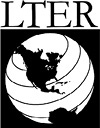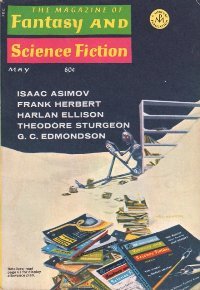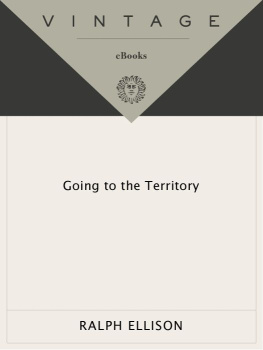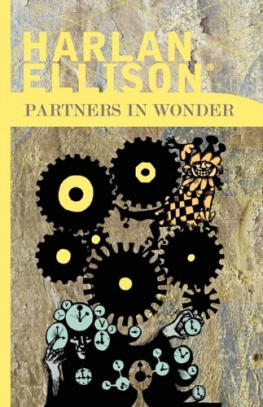Ellison Aaron M. - 2018;2017;
Here you can read online Ellison Aaron M. - 2018;2017; full text of the book (entire story) in english for free. Download pdf and epub, get meaning, cover and reviews about this ebook. City: New Haven;CT, year: 2018;2017;2017, publisher: Yale University Press, genre: Romance novel. Description of the work, (preface) as well as reviews are available. Best literature library LitArk.com created for fans of good reading and offers a wide selection of genres:
Romance novel
Science fiction
Adventure
Detective
Science
History
Home and family
Prose
Art
Politics
Computer
Non-fiction
Religion
Business
Children
Humor
Choose a favorite category and find really read worthwhile books. Enjoy immersion in the world of imagination, feel the emotions of the characters or learn something new for yourself, make an fascinating discovery.

- Book:2018;2017;
- Author:
- Publisher:Yale University Press
- Genre:
- Year:2018;2017;2017
- City:New Haven;CT
- Rating:5 / 5
- Favourites:Add to favourites
- Your mark:
- 100
- 1
- 2
- 3
- 4
- 5
2018;2017;: summary, description and annotation
We offer to read an annotation, description, summary or preface (depends on what the author of the book "2018;2017;" wrote himself). If you haven't found the necessary information about the book — write in the comments, we will try to find it.
2018;2017; — read online for free the complete book (whole text) full work
Below is the text of the book, divided by pages. System saving the place of the last page read, allows you to conveniently read the book "2018;2017;" online for free, without having to search again every time where you left off. Put a bookmark, and you can go to the page where you finished reading at any time.
Font size:
Interval:
Bookmark:
STEPPING IN THE SAME RIVER TWICE
OTHER BOOKS BY AYELET SHAVIT
One for All? Facts and Values in the Debates over the Evolution of Altruism (Jerusalem, Israel: The Magnes Press, 2008)
OTHER BOOKS BY AARON M. ELLISON
A Primer of Ecological Statistics (Sunderland, MA: Sinauer Associates, 2012)
A Field Guide to the Ants of New England (New Haven, CT: Yale University Press, 2012)
EDITED BY AYELET SHAVIT AND AARON M. ELLISON
WITH A FOREWORD BY W. JOHN KRESS
REPLICATION IN BIOLOGICAL RESEARCH

Copyright 2017 by Yale University. All rights reserved. This book may not be reproduced, in whole or in part, including illustrations, in any form (beyond that copying permitted by Sections 107 and 108 of the U.S. Copyright Law and except by reviewers for the public press), without written permission from the publishers.
This volume is a contribution of the Long Term Ecological Research (LTER) program funded by the U.S. National Science Foundation. The twenty-five LTER sites, which encompass diverse ecosystems from Alaska and Antarctica and include islands in the Caribbean and the South Pacific, make up the largest and longest-running ecological research network in the world. The LTER network of sites serves as a global model for transparent and reproducible ecological and environmental research.

Yale University Press books may be purchased in quantity for educational, business, or promotional use. For information, please e-mail (U.K. office).
Set in Scala and Scala Sans type by Westchester Publishing Services. Printed in the United States of America.
Library of Congress Control Number: 2016951790
ISBN 978-0-300-20954-9 (hardcover : alk. paper)
A catalogue record for this book is available from the British Library.
This paper meets the requirements of ANSI/NISO Z39.48-1992 (Permanence of Paper).
To Ran, Ofri, Tal, Rotem, and Frodo,
who remain unique and unreproducible,
and
To the past, present, and future practitioners of Open Science
History does not always repeat itself. Sometimes it just yells, Cant you remember anything I told you? and lets fly with a club.
John W. Campbell, from Analog Science Fiction and Science Fact (1965)
W. John Kress
PART ONE. INTRODUCTION: REPLICATION ACROSS
DISCIPLINES
Ayelet Shavit and Aaron M. Ellison
Yemima Ben-Menahem
Haim Goren
The Value of Natural History Collections
Tamar Dayan and Bella Galil
Rebecca J. Rowe
Repeatable Monitoring and Observations
Avi Perevolotsky, Naama Berg, Orit Ginzburg, and Ron Drori
Ron Drori, Naama Berg, and Avi Perevolotsky
Yonathan Shaked and Amatzia Genin
Replication and Experiments
Aaron M. Ellison
Jacob Pitcovski, Ehud Shahar, and Avigdor Cahaner
Meta-analysis and the Need for Repeatability
Leonard Leibovici and Mical Paul
Mical Paul, Yaara Leibovici-Weissman, and Leonard Leibovici
The Role of Metadata in Creating Reproducible Research
Kristin Vanderbilt and David Blankman
R Emery R. Boose and Barbara S. Lerner
Morgan W. Tingley
Barbara Helm and Ayelet Shavit
Aaron M. Ellison
Ayelet Shavit
W. John Kress
Here is the idealized scientific method at work: (1) a testable hypothesis is constructed to determine a general principle that explains some initial observations; (2) an experiment is devised that will generate data to test the hypothesis; (3) the experiment is conducted and data are collected; (4) the data are analyzed; (5) the experiment is repeated until sufficient evidence allows one to fully accept or reject the hypothesis that explains the original observations; and (6) the accepted hypothesis may result in new insights that require additional testing. This basic method enables scientific progress to be made over time. In some cases the initial hypotheses can be narrow; in other cases they can be broad and substantial. In all cases the experiments, the data, and the analyses need to be replicable, repeatable, and reproducible. Good science that follows this basic method enables us to understand the world around us.
In todays society, in which science is responsible for all aspects of our lives, from our understanding and utilization of nature to our health, to our economies and livelihoods, and to our national security, scrupulously adhering to this scientific method is essential for civilization to progress and for human populations to prosper. Yet in the first decades of the twenty-first century, the integrity of this scientific process, and of the scientists who depend on it, has in some cases and by some individuals been called into question. Are the scientific method and the reproducibility of scientific results being compromised in the highly competitive nature of todays world?
The question of reproducibility is the topic of Stepping in the Same River Twice: Replication in Biological Research, superbly edited by Ayelet Shavit and Aaron M. Ellison, a philosopher of science and a field ecologist, respectively. The editors and other contributors to this volume provide a broad spectrum of thoughts and opinions on the topic. It is a subject highly relevant to the role of science in society.
First of all, as clearly presented in the book, replication, replicability, repeatability, and reproducibility must be defined. Replication is a general term, denoting different concepts and practices. A replicate results from the duplication of the methods, the results, and the analyses of an experiment at the same timeframe as the original procedures are performed. There is no variance, no error, and no secondary interpretation. Everything is the same. Repeatability is the repetition of the original experimental process under similar, but not exact, laboratory, field, and environmental conditions, which in essence tests the original conditions of the experiment under new and controlled settings. Everything is similar but not quite the same. Reproducibility is the attempt to obtain the same results of an experiment at a different time and in a different space. Exact reproducibility is difficult to achieve and for the most part is infrequently attempted from one lab to the next.
The notions of replication, repeatability, and reproducibility are necessary to successfully engage in the scientific method. Replicates are vital to reducing experimental error. Repeatability is core to understanding the laws of nature, as they allow us to quantify how processes and features, such as evolution, ecology, physiology, and morphology, vary from place to place, from one point in time to the next, and from one individual to a population of individuals, within and between species. Reproducibility allows scientists to question why experiments differ from lab to lab and between environments and therefore serves as a test of the credibility of our results.
However, it would be a big mistake to equate the lack of reproducibility with poorly conducted science or even fraud. Repeatability is simply the basic nature of the business of science. Exact reproducibility is in some ways the pipe dream of a scientifically illiterate society looking for absolute truth in what it does not understand. For scientists, and for those in society who understand the scientific process, science is working well when irreproducible results and conclusions are revealed, when they are not repeatable, and when new insights about nature are the result. It is critical that we distinguish between experimental and observational error, natural variability in environmental conditions, and fraudulent misconduct in the scientific method.
Next pageFont size:
Interval:
Bookmark:
Similar books «2018;2017;»
Look at similar books to 2018;2017;. We have selected literature similar in name and meaning in the hope of providing readers with more options to find new, interesting, not yet read works.
Discussion, reviews of the book 2018;2017; and just readers' own opinions. Leave your comments, write what you think about the work, its meaning or the main characters. Specify what exactly you liked and what you didn't like, and why you think so.











